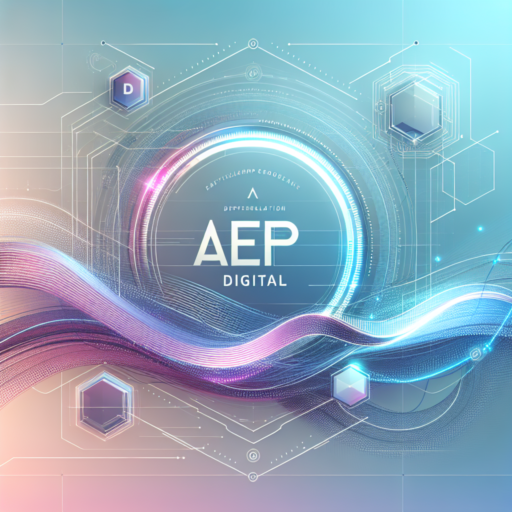What is AEP Digital? Understanding the Concept and Its Importance
AEP Digital, or Advanced Experience Platform Digital, refers to an integrated framework designed to enhance digital customer experiences through personalized interactions and data-driven insights. By leveraging sophisticated technologies, AEP Digital aims to ensure that brands can engage their customers in meaningful ways across various channels, thus bridging the gap between ordinary interactions and exceptional customer journeys.
At its core, AEP Digital relies on real-time data analytics and machine learning to understand customer behaviors, preferences, and needs. This deep understanding enables businesses to tailor their marketing strategies, improve user experience, and ultimately drive conversion rates. AEP Digital is crucial for companies looking to stay competitive in today’s fast-paced digital landscape, where consumer expectations are continuously evolving.
One of the key components of AEP Digital is its ability to centralize data from multiple sources. By consolidating information from web traffic, social media, and customer interactions, businesses can gain a holistic view of their audience. This not only aids in making informed decisions but also facilitates the implementation of targeted marketing campaigns that resonate with customers on a personal level.
Moreover, AEP Digital encourages organizations to adopt a customer-centric approach. By focusing on the needs and preferences of the consumer, companies can foster loyalty and long-term engagement. As a result, understanding AEP Digital is essential for marketing professionals and business leaders aiming to enhance their digital strategies and maintain relevance in a rapidly changing marketplace.
Key Features of AEP Digital: Why Businesses Are Embracing It
AEP Digital stands out in the crowded landscape of digital solutions, primarily due to its comprehensive analytical capabilities. Businesses increasingly rely on data-driven strategies, and AEP Digital offers advanced analytics that allow organizations to gain deeper insights into customer behavior. This feature enables businesses to tailor their marketing efforts more effectively, ensuring they reach the right audience with the right message at the right time.
Seamless Integration with Existing Systems
Another key advantage of AEP Digital is its seamless integration with existing business systems. Organizations can effortlessly integrate AEP Digital with their current customer relationship management (CRM) and enterprise resource planning (ERP) systems. This feature ensures that businesses can maintain continuity while upgrading their technological stack, making it easier to manage data flows and optimize operational efficiency.
Personalization at Scale
One of the most compelling aspects of AEP Digital is its ability to deliver personalization at scale. In today’s marketplace, customers expect brands to personalize their experiences. AEP Digital allows businesses to create tailored content and campaigns that resonate with individual customers based on their preferences and past interactions. By leveraging machine learning algorithms, companies can automate and enhance their personalization strategies, resulting in improved customer loyalty and satisfaction.
Enhanced Security Features
As digital transformation accelerates, data security has become a paramount concern for businesses. AEP Digital incorporates enhanced security features to safeguard sensitive information and ensure compliance with data protection regulations. By adopting a robust security framework, businesses can build trust with their customers, knowing that their data is protected while they leverage the platform’s capabilities for growth and innovation.
How AEP Digital Transforms Customer Experience and Engagement
In the rapidly evolving digital landscape, AEP Digital stands at the forefront of transforming customer experience and engagement. By leveraging advanced analytics and personalized content delivery, AEP Digital enables businesses to connect more deeply with their customers. This transformation allows organizations to not only meet customer expectations but to exceed them by providing tailored interactions that resonate with individual preferences.
Personalization at Scale
AEP Digital fosters personalization at scale, ensuring that every customer journey is unique. Utilizing machine learning algorithms, AEP analyzes customer behavior and preferences in real time. This data-driven approach empowers businesses to create customized marketing strategies that enhance the customer experience. Key features of AEP Digital’s personalization capabilities include:
- Targeted Content Delivery: Delivering relevant content based on user interests.
- Dynamic User Interfaces: Adjusting interfaces to match user behaviors and preferences.
- Predictive Analytics: Anticipating customer needs before they arise.
Seamless Omnichannel Interactions
Another pivotal aspect of AEP Digital’s impact is its ability to create seamless omnichannel interactions. Customers today engage through multiple channels, and AEP ensures a cohesive brand experience across these platforms. This is achieved through:
- Integrated Platforms: Combining data from various sources to form a unified customer view.
- Consistent Messaging: Ensuring that brand messaging remains coherent across all touchpoints.
- Real-time Responses: Engaging customers instantly, enhancing satisfaction and loyalty.
Furthermore, AEP Digital employs customer feedback mechanisms that allow businesses to gather insights directly from users. This valuable feedback loop facilitates continuous improvement of products and services, ensuring that customer needs are always met. By nurturing these interactions and responding to customer sentiments, organizations can foster stronger relationships and drive greater engagement.
Implementing AEP Digital: Best Practices for Successful Adoption
Implementing AEP Digital requires strategic planning and execution to ensure successful adoption across your organization. One of the best practices is to establish clear goals and objectives early in the process. By defining what success looks like, teams can align their efforts and measure progress effectively.
Engage Stakeholders Early
Engaging stakeholders from the beginning is crucial for buy-in and support. This can be achieved through:
- Facilitating workshops and training sessions
- Creating feedback loops to gather insights
- Communicating the benefits of AEP Digital clearly
By involving stakeholders, you can foster a sense of ownership, ensuring that everyone understands the resources and benefits that AEP Digital offers.
Provide Comprehensive Training
Another best practice is to offer comprehensive training programs tailored to various user levels. Training should cover:
- Basic functionalities of AEP Digital
- Advanced features and analytics capabilities
- Best practices for data management and integration
This approach not only enhances user confidence but also accelerates the adoption process, allowing teams to leverage the platform’s capabilities fully.
Monitor and Iterate
Finally, monitoring the implementation process and collecting user feedback is critical to refining your approach. Set up metrics to assess:
- User engagement and satisfaction
- Operational efficiency improvements
- ROI from AEP Digital initiatives
By regularly reviewing these metrics, organizations can identify areas for improvement and make iterative updates, ensuring that AEP Digital continues to meet the evolving needs of the business.
Future Trends in AEP Digital: What to Expect in the Coming Years
The landscape of AEP digital is poised for significant evolution in the coming years, driven by advancements in technology and shifts in consumer behavior. One of the most notable trends is the increased integration of artificial intelligence (AI) and machine learning into AEP platforms. These technologies will not only enhance the analytical capabilities of AEPs but also allow for more personalized user experiences. Companies are expected to leverage AI to predict customer preferences and tailor content, ensuring greater engagement and satisfaction.
Enhanced Data Privacy Standards
As digital privacy concerns continue to grow, future AEPs will increasingly adopt more stringent data privacy measures. This includes compliance with evolving regulations such as GDPR and CCPA. Companies will prioritize transparency in data collection and usage, aiming to build consumer trust. Consequently, businesses may invest in advanced encryption technologies and provide users with more control over their data, balancing personalization with privacy.
Cloud-Based Solutions
- Scalability: Cloud-based AEPs offer greater flexibility and scalability, allowing businesses to adapt to changing market demands seamlessly.
- Collaboration: Enhanced collaboration features will emerge, facilitating better teamwork across departments to create a unified approach to analytics.
- Cost Efficiency: Migrating to cloud solutions can significantly reduce operational costs associated with maintaining on-premises infrastructure.
Moreover, the ongoing shift toward utilizing big data will lead to more sophisticated AEP functionalities. By harnessing the power of vast amounts of consumer data, AEPs will provide deeper insights into customer behavior and preferences. This trend towards data-centric decision-making will empower companies to optimize their strategies, ultimately enhancing their market positioning.




